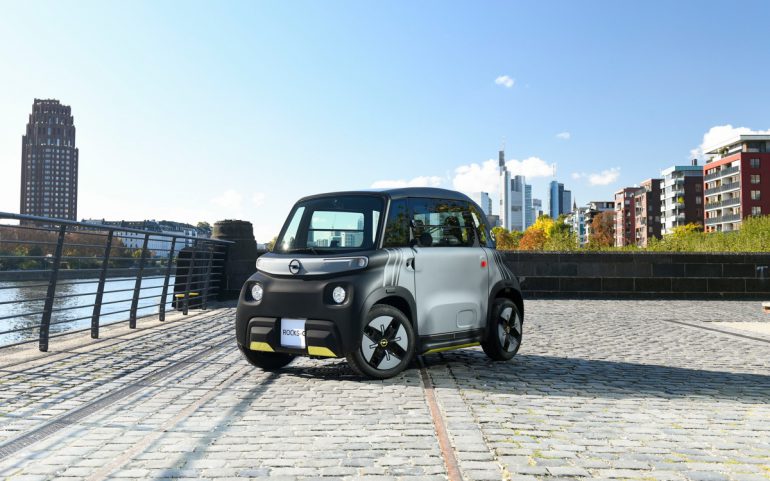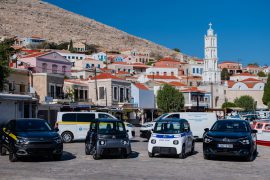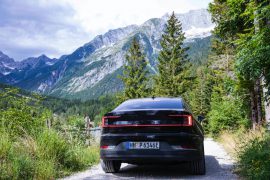Our test drive with the new two-seater “Rocks-e” city car along the Main and through Frankfurt’s city centre turned out to be a very special experience. And this was not only due to the smart vehicle itself, but also to the reactions that the little wagon evoked along the route.
Real eye catcher
Whether motorists, pedalists or passers-by, many were amazed when they noticed the miniature version of a “real” car. And quite often their amazement at this strange vehicle dissolved into a “thumbs up” gesture or at least a happy smile at the driver. No pitying grins along the lines of “someone can’t afford a real car here”, just astonished looks and often even sheer enthusiasm. Yet it was precisely the possible reactions of other road users that caused a slight unease in the run-up to the trip. After all, there was the anxious question of whether a vehicle with a maximum “speed” of 45 km/h and a mere 6 kW/8 hp would not turn out to be a rolling obstacle and whether its pilot would become the target of various curses from “real” car drivers. Such concerns were dispelled at the first traffic light, when the tiny vehicle was able to keep up well at the start and easily moved along with the flow of traffic until the next traffic light. This did not change significantly during the entire tour through the city. Sure, at a few moments you wished for a little more horsepower, but in its “natural habitat”, the city, the little Rüsselsheim doesn’t make itself unpopular as an annoying blocker when hopping traffic lights.
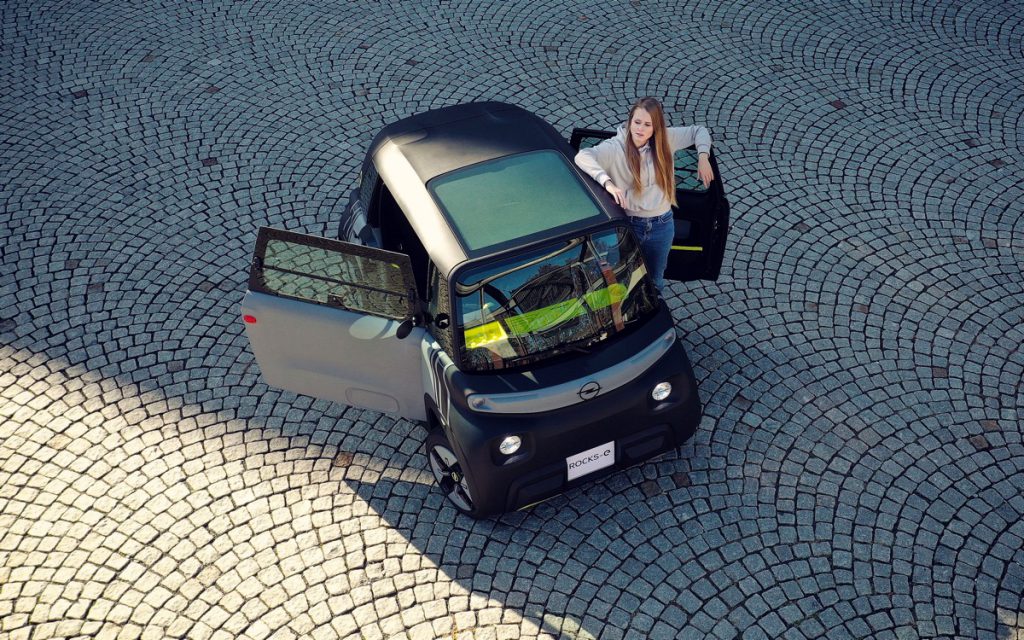
The Mini Opel, a cool non-car
As nice as it is to attract curious glances, even if they are really only directed at the smart vehicle around you, what matters most is the impression the Rocks-e leaves on its passengers. Before we get to that, it should be explicitly pointed out that the little one does not want to be a car, cannot be a car and therefore is not a car. Consequently, this Electric Light Vehicle (LEV) formally belongs to the family of “light four-wheelers for passenger transport” under the classification L6e-BP. However, measuring the Rocks-e against a conventional passenger car just because two people can sit next to each other in it and it has a roof over their heads does not do justice to the tiny vehicle. As an exclusively urban vehicle, it competes with e-scooters, S-pedelecs or the well-known Renault TWIZY, but it has more to offer than the latter. Especially at a sensationally low price. The basic version costs 7,990 euros, the Opel Rocks-e Klub and Opel Rocks-e TeKno versions cost 8,790 euros each. There are still no nationwide subsidies for electric vehicles in the L6e class, but in Munich, for example, buyers can have their LEV vehicle subsidised by the city to the tune of 1000 euros. Speaking of buyers: Opel is addressing a young target group in particular with its micro-mobile. Thanks to the classification of the Rocks-e as a light vehicle, this clientele starts at the age of 16, in some federal states even at 15. The prerequisite is possession of a class AM driving licence. Who knows, maybe it will soon be considered cool for this age group in the cities to be on the road in a four-wheeled eye-catcher instead of a scooter. Especially since weather protection and the possibility to talk to fellow passengers are definitely decisive plus points.
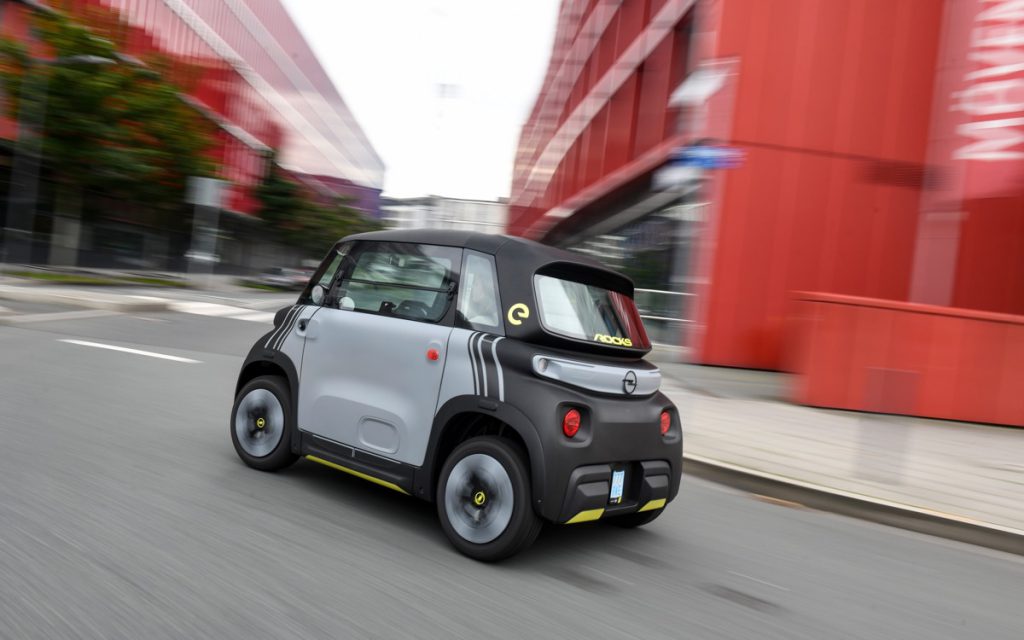
Hard as nails – like a rocker
A look inside the rather spartan interior immediately reveals what distinguishes the little one from a “real” car. Electric rocking means pure mobility, but in order to keep the price as low as possible, almost everything that drivers are accustomed to in terms of amenities or even some additional bells and whistles has been dispensed with. This is most obvious in the minimalist seats with integrated plastic neck support, which can be safely classified as “wooden class”. Older people in particular will probably not be thrilled by the extremely tight buttock supports, but a cushion pushed underneath may provide them with a little extra comfort. Also to soften the effects of the equally tight chassis. Perhaps the manufacturer will take up this idea and include a Rocks-e-branded cushion in its range of accessories. Given the considerable headroom, this would not be a problem even for people over 1.90 metres. All joking aside, I got out of the smallest car after about an hour’s drive – and even average trips with a maximum range of 75 kilometres are unlikely to be much longer – completely free of pain, but very pleased with the electric city round.
Properties and character
The vehicle’s manoeuvrability, which is due to its compact dimensions (length: 2.41 metres, width 1.39 metres) and special 14-inch wheels, was a major factor. Thanks to a turning circle of only 7.20 metres, parking spaces spotted on the other side of the road can be spontaneously approached in one go. This also includes mini-spaces that car drivers would not even remotely identify as such, because after all, you can even park the small car crosswise between two vehicles – and hope for lenient parking attendants and police officers if necessary.
A special, almost panorama-like feeling is conveyed by the large window area consisting of the windscreen and the roof glazing, which extends into the middle of the vehicle and creates a pleasant brightness. However, one could safely do without the measly interior mirror, which adjusts at the latest after every contact with a manhole cover.
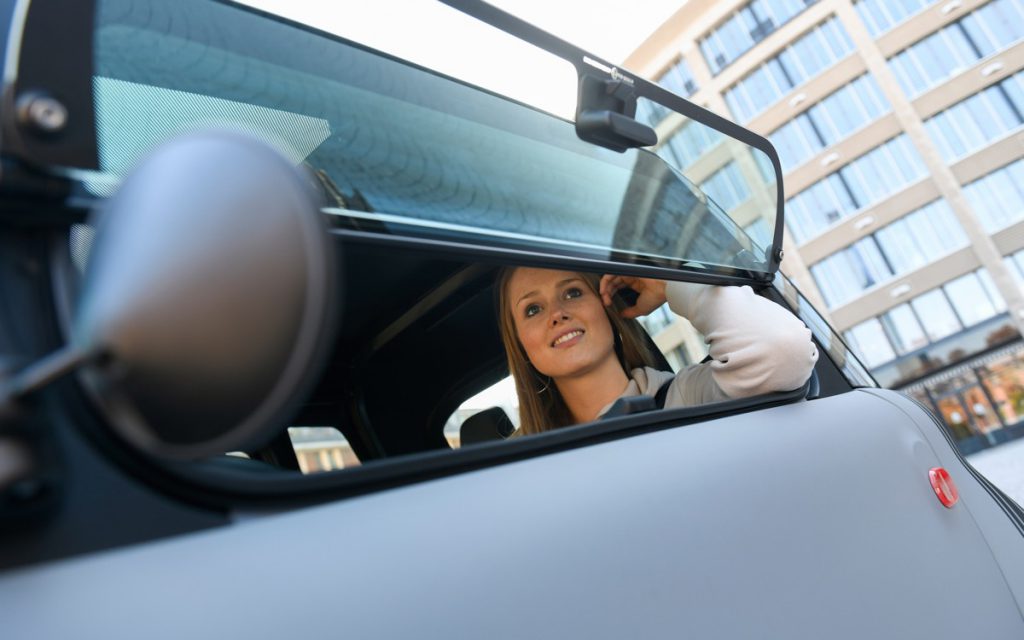
Acceleration from a standstill is sufficiently brisk, although naturally not as brute as with some passenger cars, and the steering can be operated without too much effort despite the lack of power assistance. The brakes – discs at the front, drums at the rear – are designed for the low speed and low mass (471 kg) of the vehicle, and they are not overly biting. The little rocker can be fully charged in three hours at any conventional household socket. There is a special adapter for the wallbox, but this does not shorten the charging time.
Simple materials and smart details
Not only the interior is dominated by parts made of hard plastic, but also the bodywork. For reasons of cost efficiency, it is absolutely understandable that one has deliberately dispensed with higher-quality materials and opted for a purist but functional interior.
The hinges for closing the doors from the inside are unusual and practical. Another clever idea is the reminiscence of the iconic “duck” in the form of lower side windows that fold outwards.
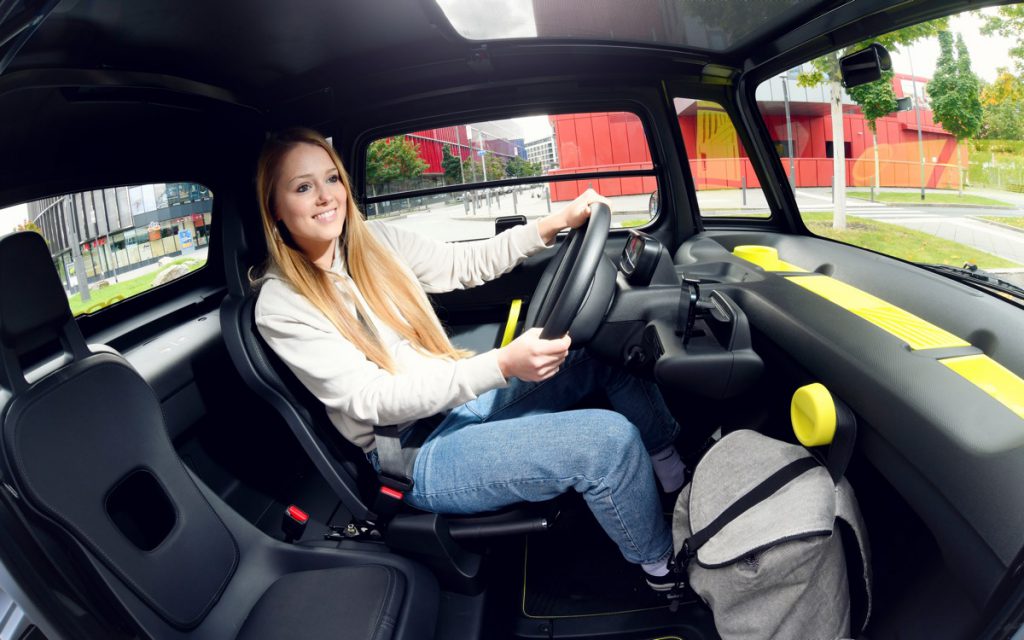
Amazing: The tiny car is made up of just about 250 parts, many of which are identical. The front and rear are almost identical, so that at first glance the question arises as to where the front is and where the rear is on the Rocks-e. At least the new Opel brand face “Vizor” provides orientation. Another unusual feature is that the driver’s door is hinged at the rear and opens forwards, while the passenger door opens backwards as usual. Due to the inevitable lack of a luggage compartment, the developers were forced to create smaller storage spaces and shelves in several places. This was achieved, for example, by placing the passenger seat relatively far back and fixing it firmly. In this way, it was possible to create space in the left-hand area of the footwell. Optionally, this small compartment can be delimited with a net. There are also areas behind the seats for storing small utensils. In addition, the designers have created relatively large compartments in the doors.
Conclusion
In the past, almost all major car manufacturers have presented concept studies of small electric vehicles for use in urban areas. But that was all for a long time. Now Opel has recognised the (climate) signs of the times with the Rocks-e – as has its Stellantis sister brand Citroën with the identical Ami (on various foreign markets) – and is offering ” an interesting series vehicle at an attractive price that is specifically tailored to the mobility needs of city dwellers. At Opel, the corresponding catchword is “Sustainable Urban Mobility”, or SUM for short. Anyone who does not apply the usual car standards when assessing the small car will be enthusiastic about the Rocks-e, not least because of the great price-performance ratio and the sensational design. The time seems to be ripe for innovative, environmentally friendly mobility offers, and so it is to be hoped that the likeable City Stromer will soon help shape the streetscape of city centres.
www.opel.de/fahrzeuge/rocks-e/uebersicht.html
Text: Peter Grett
Bilder: Opel

